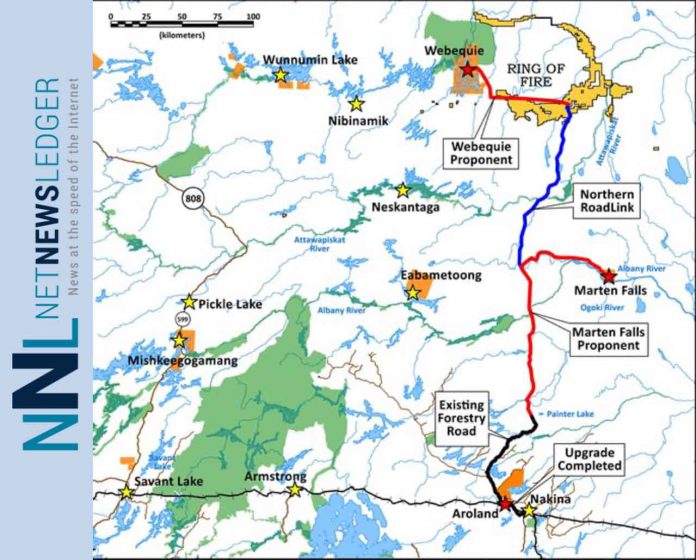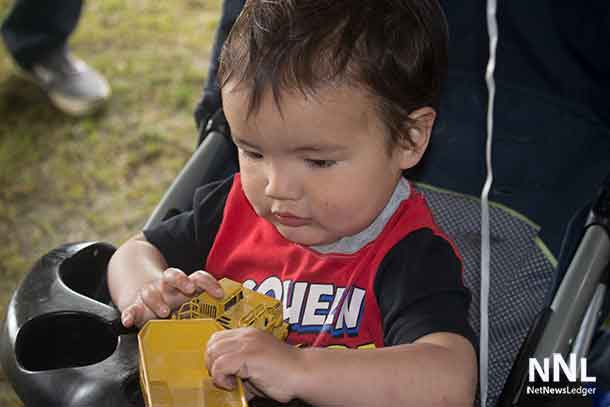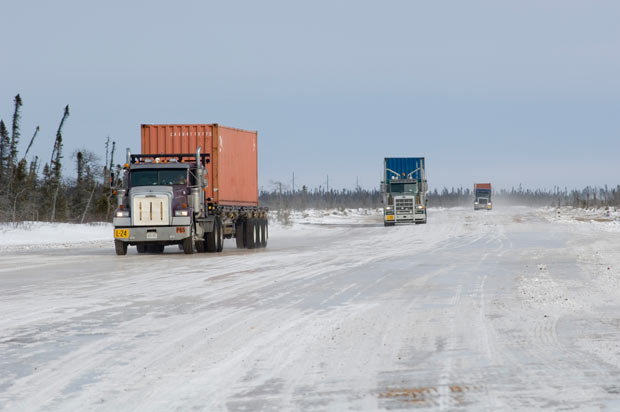THUNDER BAY – INDIGENOUS NEWS – In 2020, the federal Minister of Environment and Climate Change determined that a Regional Assessment (RA) will be conducted in the Ring of Fire area of Northern Ontario.
As part of that federal process, a draft RA agreement was made available for comments from Indigenous communities from December 2, 2021 to March 2, 2022. Marten Falls First Nation and Webequie First Nation have opted to submit direct comments to the Impact Assessment Agency of Canada (IAAC).
Chief Bruce Achneepineskum of Marten Falls says, “Marten Falls and Webequie support an Indigenous led RA, but firmly believe that their 2 communities should lead the process. This is in accordance with our community values, traditions, and protocols. We have always respected the rights of other communities to do the same in their traditional territory. As lead communities responsible for all processes and assessments in the region, we would welcome direct dialogue and consultation with other First Nations. We refuse to be divided and the partnership of the 2 communities speaks to our collaborative spirit, but our rights cannot be diluted.”
They have also decided not to participate in a submission drafted by their Tribal Council (TC) but wish to thank the TC for their efforts on this matter. The RA is focused on the Ring of Fire area, which is entirely Marten Falls and Webequie traditional territory.
Therefore, the 2 communities will speak directly on their own behalf and will not be represented by any other entity in the process.
Based on their community protocols as stewards of their traditional territory, the 2 First Nations will work directly with neighboring First Nations and with the federal and provincial governments on the RA. However, they wish to be clear that the focus of the RA is on their traditional territory and they intend to lead all activities in their traditional territory, without exceptions.
Marten Falls and Webequie are leading the development of their road projects (i.e., Marten Falls Community Access Road, the Northern Road Link, and Webequie Supply Road).
These projects are located on their territory, connect their communities to the provincial highway network, and provide economic development opportunities by connecting them to the Ring of Fire area, which would otherwise not be available in this remote region. The communities volunteered to undertake Individual Environmental Assessments, which represent the highest level of regulatory scrutiny available in the province.
Additionally, the communities follow their own internal community requirements and protocols to ensure that the highest level of community stewardship standards are met. Despite this remarkable depth of work undertaken by the 2 communities, the Federal Minister decided to undertake an RA. Since that decision, other regional communities have called for an Indigenous led assessment. The TC’s submission of comments also contemplates the TC leading RA efforts.
In a letter dated March 2, 2022, Marten Falls and Webequie both unequivocally clarified for their TC – and wish to do so for other neighbouring communities and non-Indigenous organizations – that Marten Falls and Webequie have been stewards of their traditional territories since time immemorial and have no reason to give up that responsibility today or in the future.
The communities are currently leading existing assessments on the projects listed above and should lead any future Indigenous-led RAs concerning the Ring of Fire or any other part of their traditional territory.
The 2 communities believe that if an RA was being conducted on another nation’s traditional territory, then Marten Falls and Webequie would expect to participate in the RA – especially if their traditional and Aboriginal rights were impacted by the assessment – but would not expect to lead it. The RA is an extra process-oriented step and while the 2 communities will work with IAAC to determine its efficacy and value for their communities, they are satisfied as communities and traditional rights holders in the Ring of Fire region with their approach and in working directly with IAAC on the proposed RA. This includes thorough investigation of baseline conditions, following internal community direction and protocol, utilizing traditional knowledge, and working with neighbouring communities to understand their concerns and to mitigate potential impacts though innovative scientific and Indigenous knowledge means.
The 2 communities recognize that the rights of other Indigenous communities across the region may also be impacted by development activities, but they are also mindful of the fact that the communities of Marten Falls and Webequie will be the most impacted communities, as the Ring of Fire is located entirely within the traditional territory of the 2 communities.
Chief Cornelius Wabasse of Webequie First Nation has also cautioned that a RA process which does not value the unique positions of Marten Falls and Webequie as traditional land holders stands to impact the Aboriginal and treaty rights of all First Nations. Chief Wabasse says that: “We value processes that encourage sustainable development and resource planning to mitigate potential cumulative impacts in ROF region. Both Webequie and Marten Falls First Nation expect to enter a cooperative agreement and accommodate this RA in our Territory. The relationship pillars of our community consist of our community wellbeing, the protection of our way of life, livelihood, and sustainable economic development. RA is not a tool to stop development but to better prepare and protect the environment for the generations to come.”
Marten Falls and Webequie propose a tiered-relationship model for the RA process, where Indigenous communities across the region engage with Marten Falls and Webequie directly to discuss their concerns about future activities in the Ring of Fire. Both communities recognize the importance of neighbouring communities’ input and encourage meaningful dialogue with these communities to ensure equitable participation in the RA process and ongoing assessments. A key benefit of this model is that it affirms the rights of a community on its traditional territory, enables the equitable participation of neighbouring communities, and advances reconciliation.
SOURCE: The Northern Road Link







